New Paragraph
Masonry Storm Shelters
Solutions News | A Publication of SRM Concrete, producers of Decrastone | Fall 2021 Edition
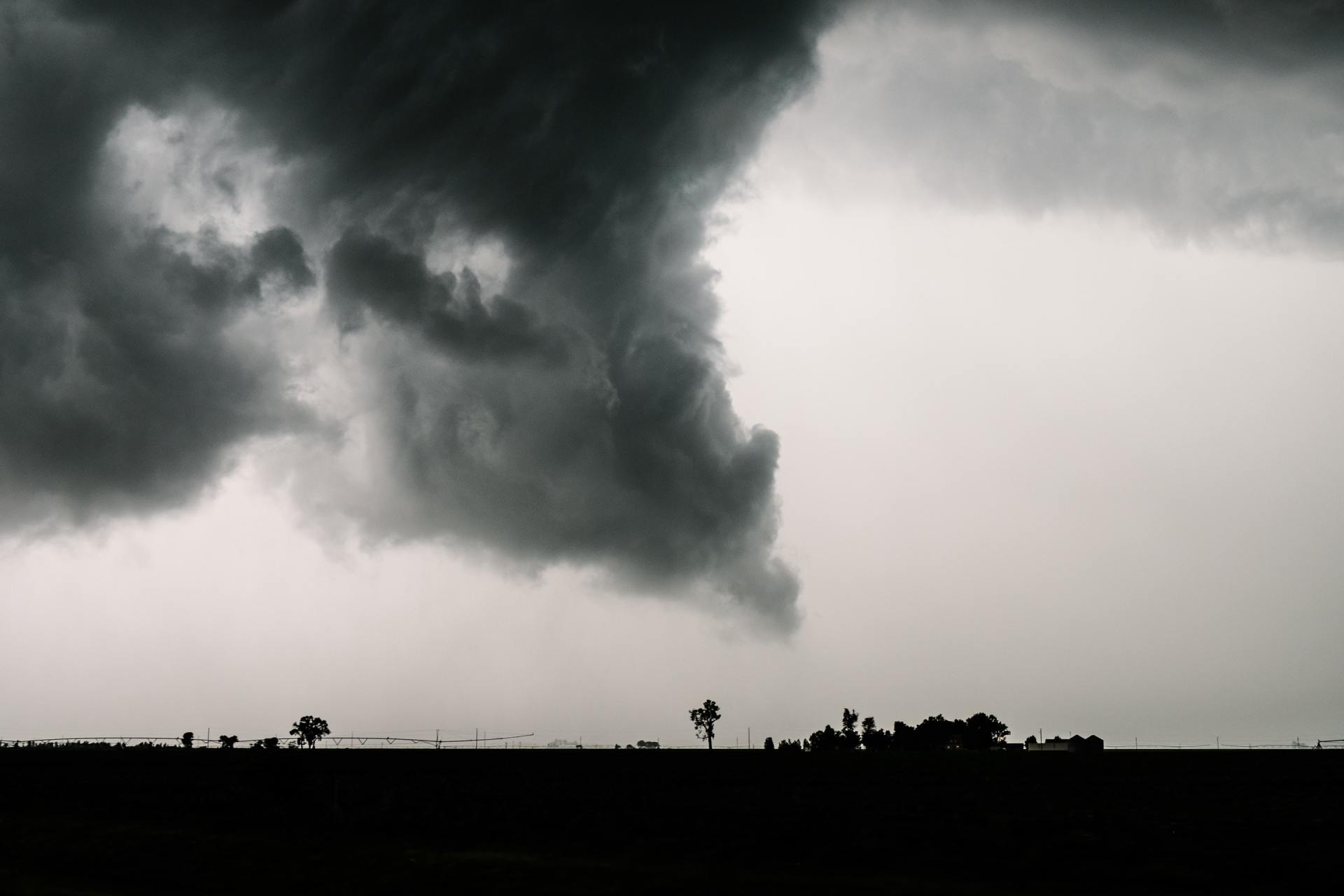
Over half of the U.S. may be affected by high wind damage
JBHM Architects and masonry storm shelters
JBHM Architects in Tupelo, MS has designed many FEMA Safe Rooms throughout Mississippi. They have used monolithic shotcrete domes and conventional reinforced concrete masonry to provide essential emergency shelters to communities at an affordable investment. At times their designs have utilized round exterior elevations with a signature domed roof while others have been a contemporary blend of 12-inch reinforced concrete masonry with even a clay brick veneer.
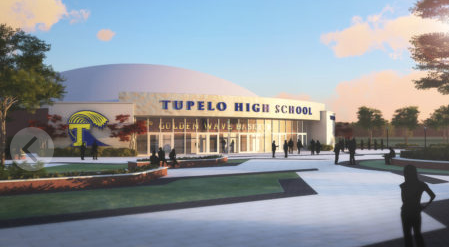
The exterior of the new Tupelo High School Storm Shelter proves that an attractive exterior belies the integral structural integrity of the building.
FEMA Considerations
Although the Federal Emergency Management Agency stipulates concrete and Concrete Masonry Units be used in the construction of subsidized safe rooms, Will Lewis with JBHM says it’s an excellent choice regardless of the government’s specification. While readily available in all markets, new manufacturing processes provide unique colors, textures, and shapes to allow for a modern design and still give all the time-tested benefits of concrete. They have designed projects with a concrete veneer to match existing brick clad buildings and others meant to serve as stand-alone centerpieces of a school campus or urban setting.
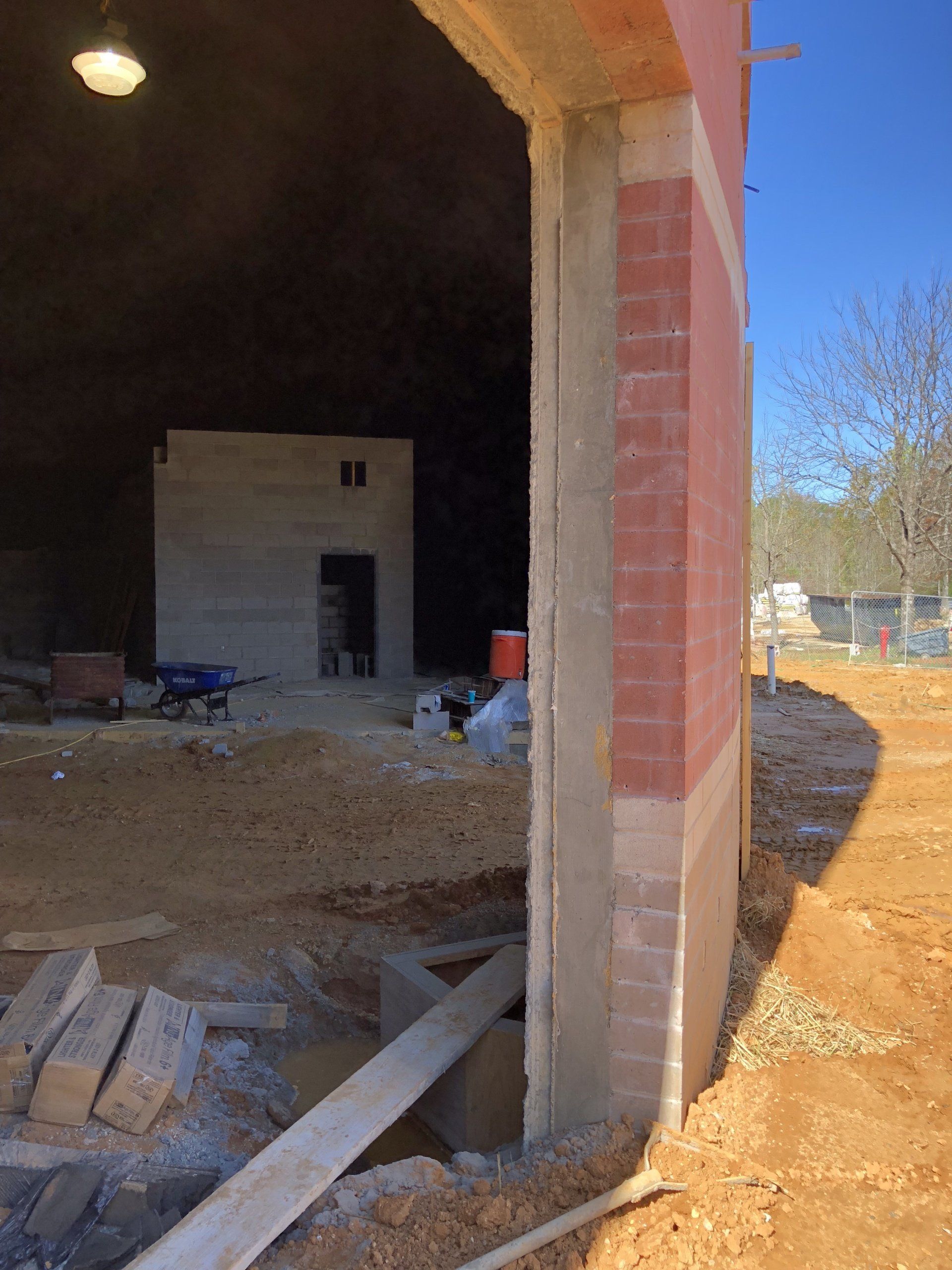
The exterior wall section showing a veneer concrete masonry.
Multi-use Functionality
JBHM believes no other building material offers the unique combination of compression strength, insulative properties and ease of design application like they achieve with concrete masonry. Their Safe Rooms provide a facility to the owner that is pleasing to the aesthetic of the community, easily maintained and invaluable to the safety of residents and students. Colors, textures, and strength. JBHM believes concrete masonry provides it all.
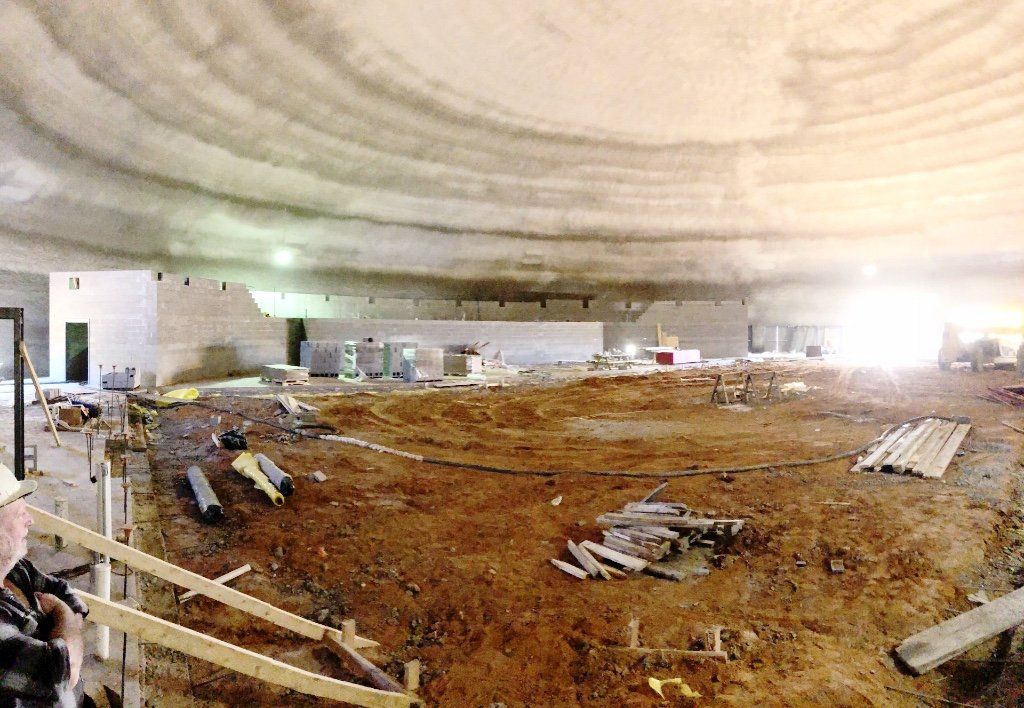
The interior of the Storm Shelter which also doubles as a event space for the high school and seats over 4,000.
The following excerpt is copied from FEMA Fact Sheet - May 2016. FEMA and IBC codes and regulations should be followed in all cases. The following are merely an introduction to the Safe Room issues.
Every year, tornadoes, hurricanes, and other extreme
windstorms cause numerous fatalities and injuries, and cost millions of dollars worth of property damage throughout the United States. Most businesses and pub-lic buildings, even new ones constructed according to current building codes, do not provide adequate protec-tion for occupants seeking refuge from these events.
A community safe room can provide near-absolute protection for many community members, when it is constructed in accordance with FEMA criteria. A growing number of these safe rooms have saved lives in actual events.
What is a Safe Room?
A safe room is a room or structure specifically designed and constructed to resist wind pressures and wind-borne debris impacts during an extreme-wind event, like tor-nadoes and hurricanes, for the purpose of providing life-safety protection.
The criteria for a community safe room is contained in FEMA P-361, Safe Rooms for Tornadoes and Hurri-canes: Guidance for Community and Residential Safe Rooms (2015). The first edition of FEMA P-361 (2000)served as a legacy document for the development of ICC 500, Standard for the Design and Construction of Storm Shelters (2014). The ICC 500 document stand-ardizes and codifies much of the design guidance pro-vided in FEMA P-361. Both of these documents pro-vide life-safety protection per ICC 500 and are de-signed to minimum building code requirements. How-ever FEMA P-361 additionally designs to near-absolute protection which includes operation and emergency planning criteria. Moreover, for select criteria such as flood hazard elevation, FEMA P-361 is more conservative."
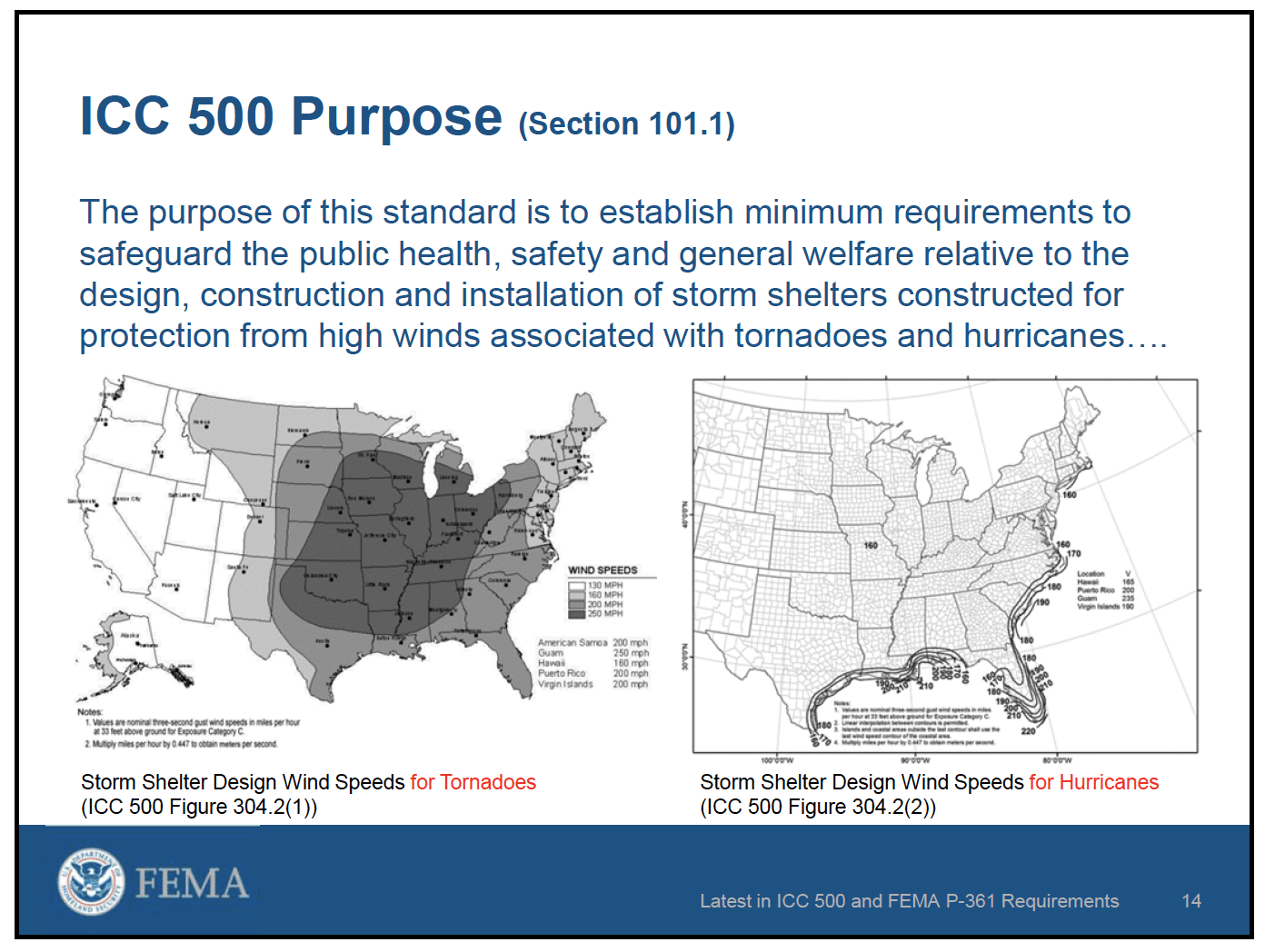
Does Every Community Need a Safe Room?
Every state is at some risk from tornadoes and severe weather. The decision to build a community safe room can be based on a single factor or a collection of elements. Individual factors are often related to the potential for loss of life or injury (e.g., officials at a hospital that cannot move patients in an intensive care unit, or officials at a school that takes care of a large number of children).
The decision should be based on a thorough risk assessment that considers the type of hazard, probability of the event, occurrence and severity of the event, and the vulnerability of community buildings and the size of the population at risk. In most cases, the decision to construct a storm shelter or safe room is voluntary.
However, a new provision in the 2015 International Building Code (IBC) requires storm shelters for individual buildings in high-risk areas. Communities that adopt the 2015 IBC and are located in the 250 mph wind zone (see Figure B3-1 in FEMA P-361) must construct a storm shelter (that meets or Seneca Intermediate School multi-purpose Community Safe Room, Seneca, MO. “FEMA’s mission is to support our citizens and first responders to ensure that as a nation we work together to build, sustain, and Improve our capability to prepare for, protect against, respond to, recover from, and mitigate all hazards.”
Federal Insurance and Mitigation Administration Community Safe Rooms May 2016 exceeds ICC 500) in any new schools, 911 call stations, emergency operation centers, and fire, rescue, ambulance, and police stations. FEMA P-361 contains guidance on conducting risk assessments and provides a decision-making process that can help community officials and residents determine their need for a Community Safe Room.
The Multi-Purpose Safe Room
Community safe rooms can also be designed for multiple purposes, including community centers for manufactured home parks and gymnasiums, cafeterias or music rooms in public schools.
Safe Rooms and Flooding Hazards
Safe rooms should not be constructed where flood waters have the potential to endanger occupants within the safe room. Safe rooms in areas where flooding (storm surge) may occur during hurricanes should not be occupied during a hurricane. However, occupying such a safe room would be appropriate if the safe room will not be flooded by rains associated with other storm and tornado events."
In Conclusion
Storm Shelters can be multi-purpose with year round functionality. Communities with schools large enough to support such a structure can benefit enormously not only for the safety aspects of the shelter for both wind and flooding but can create a structure can benefit the residents for a multitude of activities.




